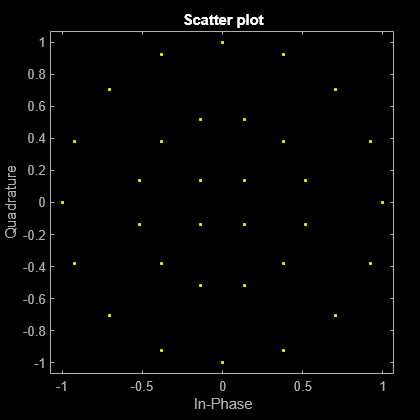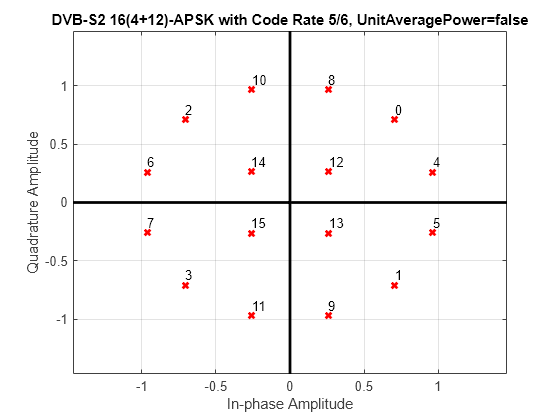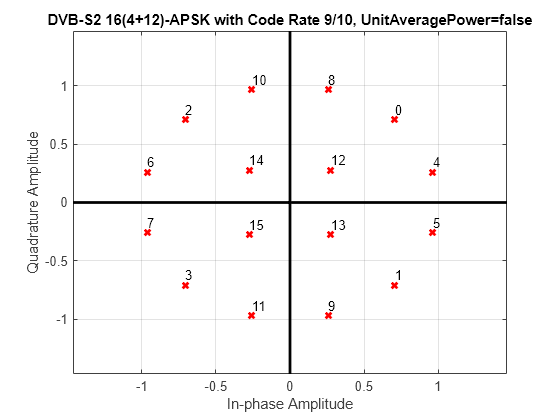dvbsapskmod
DVB-S2/S2X/SH standard-specific APSK modulation
Syntax
Description
Y = dvbsapskmod(X,M,stdSuffix)X, in accordance with the Digital Video Broadcasting (DVB-S2/S2X/SH) standard identified by stdSuffix and the modulation order,
M.
Y = dvbsapskmod(___,Name=Value)dvbsapskmod(X,M,stdSuffix,OutputDataType="double") specifies
the desired output data type as double. Specify name-value pair arguments after all
other input arguments.
Examples
Input Arguments
Name-Value Arguments
Output Arguments
More About
References
[1] ETSI Standard EN 302 307 V1.4.1: Digital Video Broadcasting (DVB); Second generation framing structure, channel coding and modulation systems for Broadcasting, Interactive Services, News Gathering and other broadband satellite applications (DVB-S2), European Telecommunications Standards Institute, Valbonne, France, 2005-03.
[2] ETSI Standard EN 302 307 V1.4.1: Digital Video Broadcasting (DVB); Second generation framing structure, channel coding and modulation systems for Broadcasting, Interactive Services, News Gathering and other broadband satellite applications (DVB-S2), European Telecommunications Standards Institute, Valbonne, France, 2005-03.
[3] ETSI Standard EN 302 583 V1.1.1: Digital Video Broadcasting (DVB); Framing structure, channel coding and modulation for Satellite Services to Handheld devices (SH), European Telecommunications Standards Institute, Valbonne, France, 2008-03.


